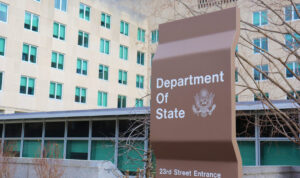I-10 study looks to ease traffic congestion and crashes
It’s a drive most of us love to hate, and now, your voice is needed on possible improvements to a key downtown Phoenix corridor.

It’s a drive most of us love to hate, and now, your voice is needed on possible improvements to a key downtown Phoenix corridor.
It’s a stretch that includes the deck park tunnel, the I-10, I-17 split interchange and the mini stack.
There are a lot of on and off-ramps – and a lot of traffic.
Experts are working to collect data to analyze hot spots for congestion and make strategic improvements to keep vehicles moving safely.
Drivers described the area, saying:
“I try to avoid it.”
“It’s a mess.”
“Chaos.”
“All of a sudden everything is like a salmon run. You’re either stopped at a dam, and then all of a sudden there’s a flood and everyone is shooting everywhere, and then again you stop.”
The freeway segment northeast of downtown Phoenix is a headache for many.
There’s the deck park tunnel, the I-10, I-17 split, and the northeast interchange of the 10, 51, and Loop 202 Red Mountain Freeway, known as the “mini-stack.”
“This section of the road is very, very important to the entire region,” said Tim Strow, transportation policy and planning director with the Maricopa Association of Governments (MAG).
With access to Phoenix Sky Harbor and downtown, Strow says the roadway is busy too.
“Over 300,000 people drive on this corridor every day,” he said.
Traffic isn’t the only concern.
PARTICIPATE IN THE SURVEY HERE
“Unfortunately, there are a lot of accidents that occur on this small segment of the roadway. We’ve seen this in our data collection. About 12,000 accidents over a five-year period, which equates to about 5.4 accidents per day,” Strow said.
With an average, MAG reports one of those accidents every month results in severe injury or death.
Strow says change is necessary.
That’s why MAG is doing a community survey asking drivers about their commutes and the challenges they face.
You can even put in comments about specific areas that are especially congested.
Strow says your input will help them create a safer and more efficient roadway.
“It was time for us to address the safety issues and the traffic operations,” he said.
The deadline for the survey is coming up on Dec. 22.
So, what happens after the survey ends?
This coming spring, there will be public meetings to discuss different alternatives based on the survey results.
It will then go back to MAG Regional Council, and ultimately, it will be the framework for the improvements funded through Proposition 479 which will be on the ballot next fall.






